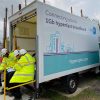Energy Assets Fibre Networks to Expand FTTP Broadband Builds

Utility infrastructure firm Energy Assets, specifically its ‘Fibre Networks‘ (EAFN) division, looks set to expand their existing deployments by becoming a bigger wholesale provider of gigabit-capable Fibre-to-the-Premises (FTTP) based broadband infrastructure to UK ISPs.
At present the group builds gas, electricity and water networks for new build home developments, while their ‘Energy Assets Fibre Networks‘ division similarly works with house builders and ISPs to ensure that fibre services are pre-installed and ready for use on the day people move in. The company already has an established partnership with Grain (Grain Connect) for such sites.
The new expansion plan was revealed as part of the company’s request for Code Powers from Ofcom, which are often sought to help speed-up deployments of new fibre optic infrastructure and cut costs, not least by reducing the number of licences needed for street works. It can also be used to facilitate access to run new fibre via Openreach’s existing cable ducts and telegraph poles (PIA).
Advertisement
The focus of all this is still confined to newly built developments.
Code Powers Statement
The applicant intends to adopt systems of telecommunications infrastructure across the whole of Great Britain, which have been constructed by either other companies within the wider company group or third party specialist infrastructure providers. This will include infrastructure which it says can be utilised for ultra-fast broadband, VoIP telephony, and TV on demand. It anticipates that it will provide wholesale access of its network to retail telecoms providers to supply broadband services to residential and business customers.
The Applicant already provides gas and energy to new housing and industrial developments and proposes to add broadband access to the services it offers to property developers.
On the surface, this sounds a bit different from the “asset ownership model” that they currently employ for fibre, and suggests that Energy Assets might be looking to maintain more control over the FTTP they build via a more accessible wholesale model. But the details are extremely thin, and it could equally be interpreted as merely a desire to expand coverage under their existing model.
Mark is a professional technology writer, IT consultant and computer engineer from Dorset (England), he also founded ISPreview in 1999 and enjoys analysing the latest telecoms and broadband developments. Find me on X (Twitter), Mastodon, Facebook, BlueSky, Threads.net and Linkedin.
« Full Fibre Builder CityFibre Wins UK RoSPA Health and Safety Award
Union Rejects Revised BT Pay Offer and Preps Strike Ballot »























































Comments are closed